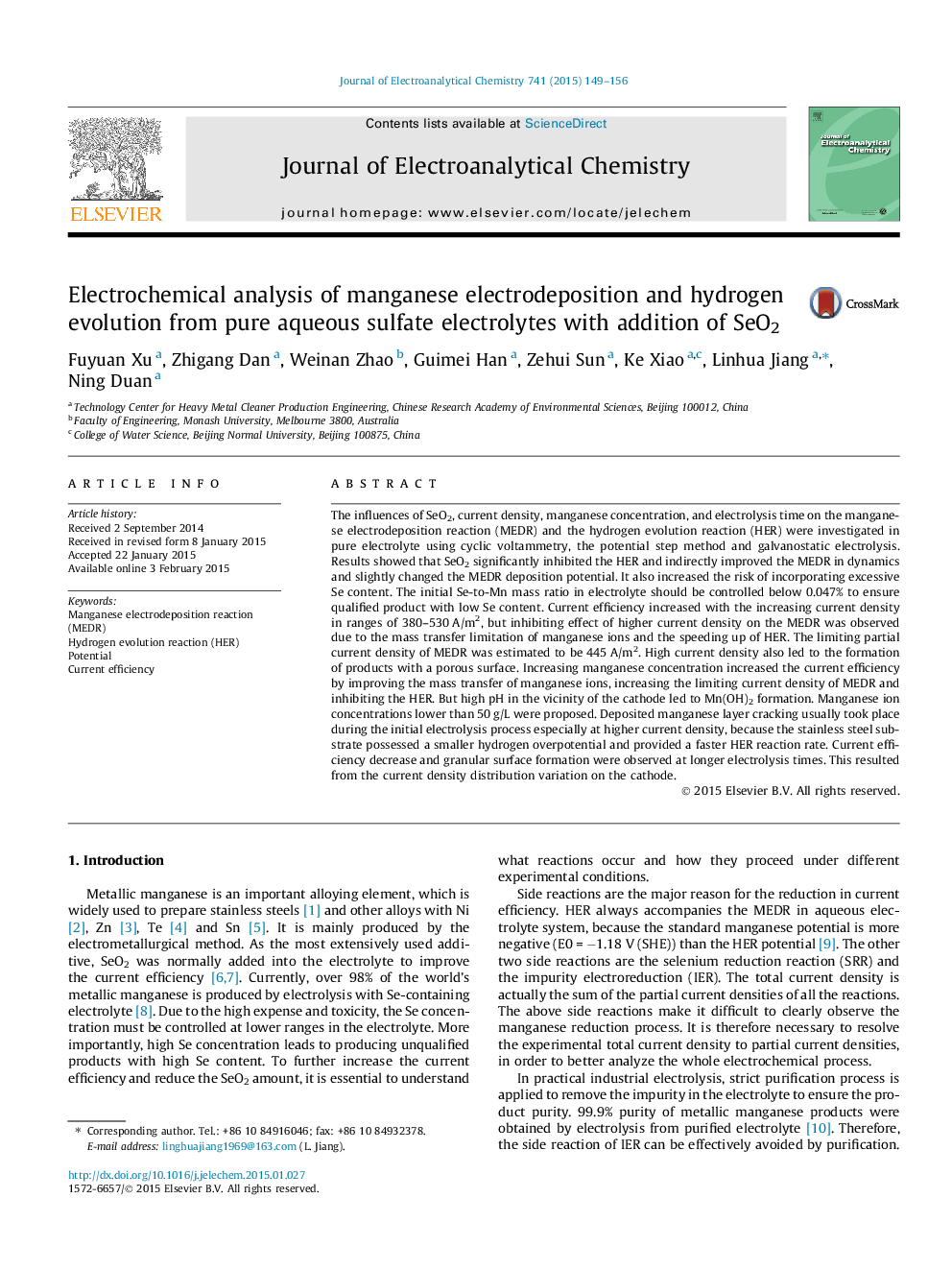| کد مقاله | کد نشریه | سال انتشار | مقاله انگلیسی | نسخه تمام متن |
|---|---|---|---|---|
| 218504 | 463204 | 2015 | 8 صفحه PDF | دانلود رایگان |

• SeO2 inhibited the H2 evolution and indirectly improved the Mn deposition.
• High current density led to Mn2+ mass transfer limitation and H2 evolution speeding up.
• High Mn2+ concentration improved Mn deposition and inhibited H2 evolution.
• Stainless steel had smaller H2 overpotential and faster H2 evolution rate than Mn.
• Current density distribution variation led to current efficiency decrease with time.
The influences of SeO2, current density, manganese concentration, and electrolysis time on the manganese electrodeposition reaction (MEDR) and the hydrogen evolution reaction (HER) were investigated in pure electrolyte using cyclic voltammetry, the potential step method and galvanostatic electrolysis. Results showed that SeO2 significantly inhibited the HER and indirectly improved the MEDR in dynamics and slightly changed the MEDR deposition potential. It also increased the risk of incorporating excessive Se content. The initial Se-to-Mn mass ratio in electrolyte should be controlled below 0.047% to ensure qualified product with low Se content. Current efficiency increased with the increasing current density in ranges of 380–530 A/m2, but inhibiting effect of higher current density on the MEDR was observed due to the mass transfer limitation of manganese ions and the speeding up of HER. The limiting partial current density of MEDR was estimated to be 445 A/m2. High current density also led to the formation of products with a porous surface. Increasing manganese concentration increased the current efficiency by improving the mass transfer of manganese ions, increasing the limiting current density of MEDR and inhibiting the HER. But high pH in the vicinity of the cathode led to Mn(OH)2 formation. Manganese ion concentrations lower than 50 g/L were proposed. Deposited manganese layer cracking usually took place during the initial electrolysis process especially at higher current density, because the stainless steel substrate possessed a smaller hydrogen overpotential and provided a faster HER reaction rate. Current efficiency decrease and granular surface formation were observed at longer electrolysis times. This resulted from the current density distribution variation on the cathode.
Journal: Journal of Electroanalytical Chemistry - Volume 741, 15 March 2015, Pages 149–156